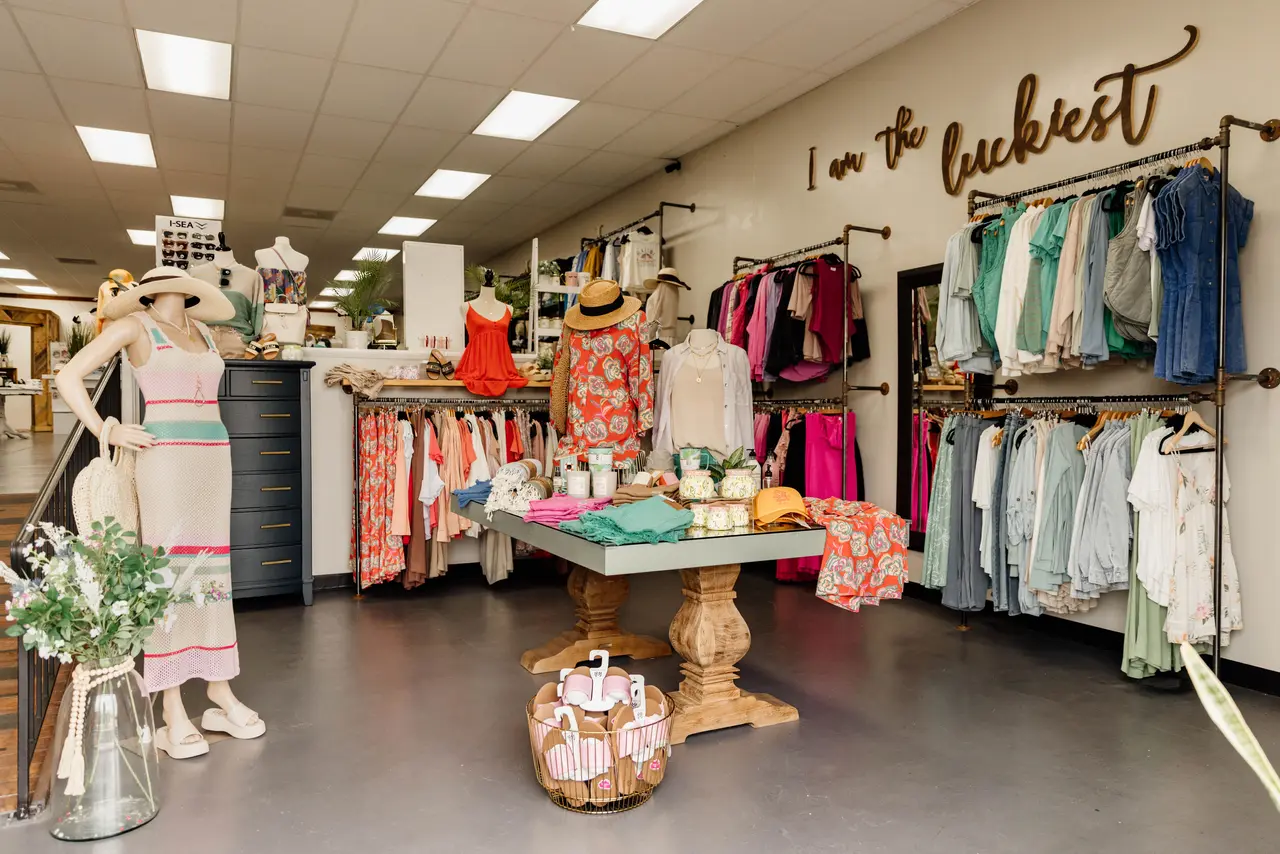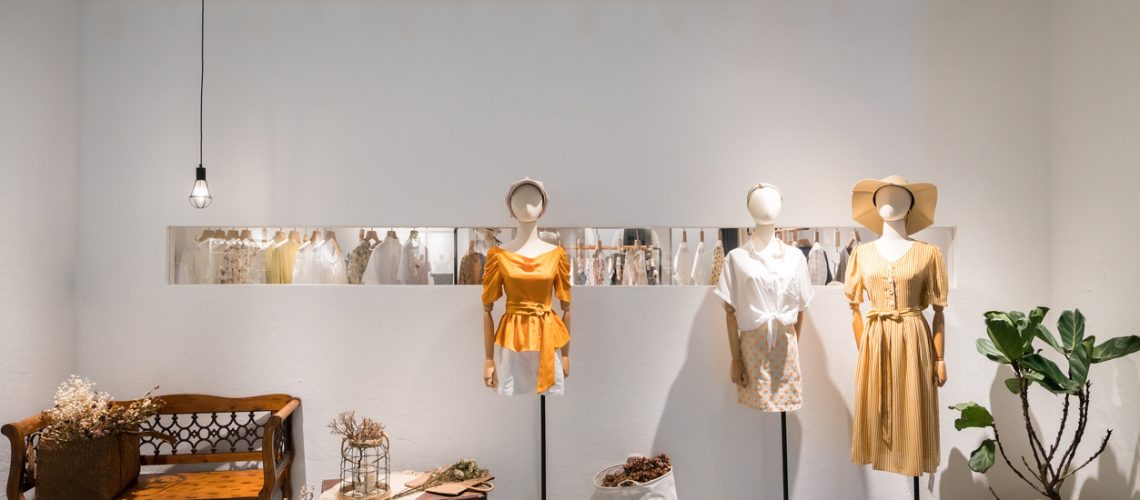Exploring the Development and Influence of Clothing on Modern Fashion Trends
The advancement of clothing has actually dramatically influenced contemporary style trends, merging historic criteria with cutting-edge advancements. Legendary figures like Coco Chanel and Yves Saint Laurent transformed the style sector by presenting concepts that prioritize comfort and availability, which remain to reverberate today. Technical strides in locations such as 3D printing and clever fabrics are redefining layout opportunities and customer experiences (boutique fashion). Additionally, the growing focus on inclusivity and sustainability is improving industry standards. As we consider these multifaceted influences, one must question how these elements collectively redefine fashion's duty in mirroring and forming modern society.
Historical Fashion Influencers
In the tapestry of style history, particular figures have actually left an indelible mark, forming the trends and designs that specify entire periods. Coco Chanel, an innovative developer, redefined women's style by introducing comfortable, classy apparel that departed from limiting bodices.
Elsa Schiaparelli is one more critical number, renowned for her avant-garde layouts that incorporated surrealist art, working together with Salvador Dalí to create whimsical items that challenged traditional aesthetics. Her ingenious usage of color and strong patterns resounds in modern fashion. Yves Saint Laurent, on the other hand, equalized high fashion with prêt-à-porter collections, bringing runway designs to the masses and establishing a precedent for contemporary ready-to-wear lines.
These enthusiasts, amongst others, not only transformed style in their times yet also set withstanding fads that reverberate in today's garment industry, supplying a structure whereupon modern designers continue to develop and introduce. Their heritages underscore the significance of imagination and daring in vogue's ever-evolving story.
Technical Innovations in Style
Amidst the dynamic landscape of the apparel industry, technological developments stand at the leading edge of advancement, improving exactly how developers produce and consumers engage with fashion. The integration of 3D printing has transformed design processes, enabling designers to experiment with complex frameworks and lasting products that were formerly unthinkable. This innovation helps with rapid prototyping, reducing waste and expediting production times.

Smart fabrics, installing innovation right into fabrics, are likewise transforming the market. Technologies like self-cleaning and temperature-regulating textiles provide improved functionality and comfort. Wearable modern technology, incorporating functions like health and fitness tracking and communication, includes a brand-new dimension to fashion, combining visual appeals with usefulness.
Cultural Changes and Style
As technical improvements remain to reshape the style industry, social changes are similarly significant, redefining style and consumer preferences. In recent times, the rise of social networks platforms has sped up the circulation of worldwide style patterns, enabling varied cultural influences to assemble and exist together. This digital interconnectivity has helped with the rapid exchange of ideas, leading to a more comprehensive and diverse interpretation of style that reflects the multifaceted nature of modern culture.
Social understanding and recognition have prompted designers to attract ideas from a more comprehensive range this of historical and ethnic contexts, incorporating typical concepts with contemporary aesthetic appeals. This combination has caused style that resonates with a wider target market, promoting a sense of identification and belonging across different demographics. In addition, the boosting demand for customization has actually driven brands to supply personalized choices, enabling customers to express originality while showing their cultural heritage.
In addition, moving societal worths have influenced fashion, with inclusivity and variety ending up being main styles. The industry has actually begun to accept models and influencers of different type of body, ethnic cultures, and gender identifications, challenging standard charm criteria. This improvement underscores the power of cultural changes in shaping the future of style, as style ends up being a more authentic expression of individual and collective identity.
Sustainability and Modern Layout
While the style industry proceeds to advance, the crucial for sustainability has actually become progressively immediate, affecting modern design practices. The rise of sluggish fashion, which highlights high quality over quantity, encourages consumers to invest in timeless pieces instead than short-term fads.
Furthermore, modern-day layout is identified by its technology in decreasing waste and advertising circularity. Strategies such as zero-waste pattern cutting and 3D knitting are getting grip, enabling designers to create garments with marginal textile wastefulness. Furthermore, brands are adopting clear supply chains, making certain liability and promoting consumer trust. This approach not just alleviates environmental impact yet additionally improves the social responsibility of style homes.

Future Trends in Fashion

Sustainability will certainly remain to be a driving force in forming future fashion trends. special info The market is increasingly taking on green materials and moral manufacturing methods, reacting to a growing customer demand for liable methods. Innovations such as bio-fabricated products and closed-loop recycling systems are readied to redefine just how clothes is generated and taken in, lowering environmental influence while preserving design and high quality.
Social shifts, consisting of the rise of inclusivity and variety, will certainly likewise play a crucial function. As culture becomes extra knowledgeable about social problems, style is expected to end up being a system for expression and modification. Developers will likely focus on producing collections that mirror a broader variety of identifications and experiences, promoting depiction and ease of access.
Final Thought
The evolution of clothes dramatically impacts contemporary style fads, where historical influences merge with modern layouts. Key figures like Coco Chanel and Yves Saint Laurent have redefined design, while technical technologies such as 3D printing and smart textiles broaden imaginative opportunities. Cultural shifts towards inclusivity and sustainability oblige brand names to embrace and adopt honest methods variety. This recurring advancement emphasizes style's role as a mirror to societal values and technological development, suggesting a future rich with development and inclusivity.
The evolution of apparel i was reading this has actually dramatically affected contemporary fashion trends, combining historic precedents with advanced innovations.Amidst the vibrant landscape of the style market, technological innovations stand at the center of advancement, reshaping how developers produce and consumers involve with fashion.While the fashion sector continues to evolve, the important for sustainability has actually come to be progressively urgent, affecting modern layout methods. As sustainability becomes ingrained in contemporary design, it leads the way for an extra aware and responsible style market.
The advancement of garments significantly influences contemporary style trends, where historic influences combine with contemporary styles.